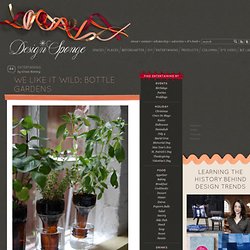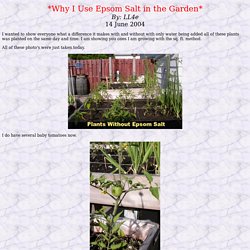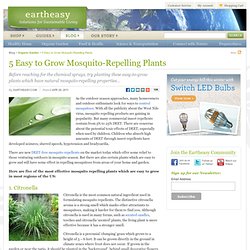

Bottle Pots. As much as we love to garden, sometimes there just aren’t enough hours in the day to do it all.

If there’s a way we can shorten our to-do list, we’ll take it. This week’s project, a no-fuss recycled windowsill herb garden, has knocked watering the plants off our list. Self-watering planters like these aren’t a new idea; we remember our own childhood craft books that taught us how to poke holes through Dixie cups or invert two liter plastic bottles to grow our own little bean garden. This grown-up version is much better looking and works great for small herbs and plants. We used beer bottles for ours, but you could make a larger garden with wine bottles too. Although this project may take a little more effort than your average windowsill garden initially, the pay off is worth it for us: we get to usefully recycle bottles, we get fresh herbs we don’t have to dote on, and we get a sparkling window display. CLICK HERE for the full (photo illustrated) project steps after the jump! Easy-to-spot/grow flower seeds for sale. BUTTERFLY BLUE PEA / Clitoria Ternatea / Bunga Telang It is a perennial herbaceous plant, with elliptic, obtuse leaves.

It grows as a vine or creeper, doing well in moist, neutral soil. The most striking feature about this plant are its vivid deep blue flowers; solitary, with light yellow markings. They are about 4 cm long by 3 cm wide. There are some varieties that yield white flowers.It is grown as an ornamental plant and as a revegetation species, requiring little care when cultivated. Its roots fix nitrogen and therefore, this plant is also used to improve soil quality.RM2 per packet, 10pcs. My Lestary Seeds - Home. Vertical Gardening Ideas: Tube Planters - Gardening Gone Wild. I was transformed into a lover and student of vertical gardening after seeing Patrick Blanc’s vertical wall designs years ago in a magazine. I’ve written about vertical gardening on GGW over the past few years. Since then, the field has continued to grow at a quick pace. The horticultural industry is focusing more and more on green roofs and vertical gardening, realizing that these two forms of gardening are not only environmentally beneficial but can help expand peoples’ horizons of how to create a garden when dealing with an unconventional space.
Look! Kyocera's Energy-Saving Green Curtains Plus Instructions To Grow Your Own. Why I Use Epsom Salt in the Garden. *Why I Use Epsom Salt in the Garden*By: LL4e14 June 2004 I wanted to show everyone what a difference it makes with and without with only water being added all of these plants was planted on the same day and time.

I am showing you ones I am growing with the sq. ft. method. All of these photo's were just taken today. I do have several baby tomatoes now. However now the non Epsom salt plants will be fed it also this was only to show those what a difference it makes. In the Garden House Plants Mix one teaspoon per gallon of water and feed to the plants every two to four weeks. Garden startup Sprinkle approximately one cup per 100 square feet. (10’x10’) and mix into soil before planting. Tomatoes Apply one tablespoon per foot of height for each plant every two weeks. Roses Apply one teaspoon per foot of height for each plant every two weeks. Evergreens, Azaleas, Rhododendrons Apply one tablespoon per nine square feet (3’x3’) over the root zone every two to four weeks. 28 Upcycles for the Garden. Styrofoam cups with dome lids, like the kind coffee or bubble tea comes in, can be upcycled as micro green houses for rooting cuttings, transplanting seedlings and seed starting.
Just wash well. For cuttings; fill cup with sand or light potting soil, poke small hole in bottom for drainage, dip cutting in rooting hormone powder, stick stem in soil, put dome cap on and place in cool, shady to semi-shady spot. For seed starting; fill with seed starting mix, add seeds, water lightly, place dome on top. If dome has hole in center, cover with tape, remove after seedlings get first true leaves. Set in warm (not hot) spot. Seedlings in water bottles *3 pics* (edited with egg shell seeding tute) - MISCELLANEOUS TOPICS. This is sort of recycling, sort of gardening, sort of crafting.I'm not sure!

At any rate, I did this today: Left to right:dill, dill, flat leaf parsley, basil, basil, basil and more basil... 10 Best Bottle Gardening Ideas. HOW TO BUILD A BOTTLE TOWER. 5 Easy to Grow Mosquito-Repelling Plants. As the outdoor season approaches, many homeowners and outdoor enthusiasts look for ways to control mosquitoes.

With all the publicity about the West Nile virus, mosquito repelling products are gaining in popularity. But many commercial insect repellents contain from 5% to 25% DEET. There are concerns about the potential toxic effects of DEET, especially when used by children. Children who absorb high amounts of DEET through insect repellents have developed seizures, slurred speech, hypotension and bradycardia. There are new DEET-free mosquito repellents on the market today which offer some relief to those venturing outdoors in mosquito season.
Here are five of the most effective mosquito repelling plants which are easy to grow in most regions of the US: 1. Citronella is the most common natural ingredient used in formulating mosquito repellents. Citronella is a perennial ‘clumping’ grass which grows to a height of 5 – 6 feet. 2. Horsemint leaves can be dried and used to make herbal tea. Self watering recycled plant pot for growing herbs and flowers. VERTICAL VEGETABLES: "Grow up" in a small garden and confound the cats! 28 Upcycles for the Garden.